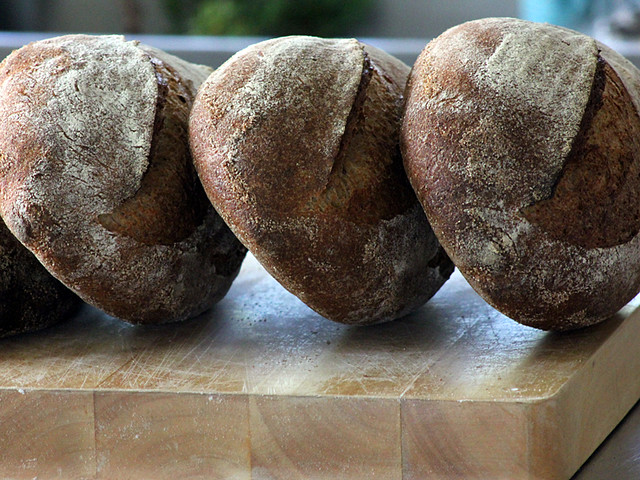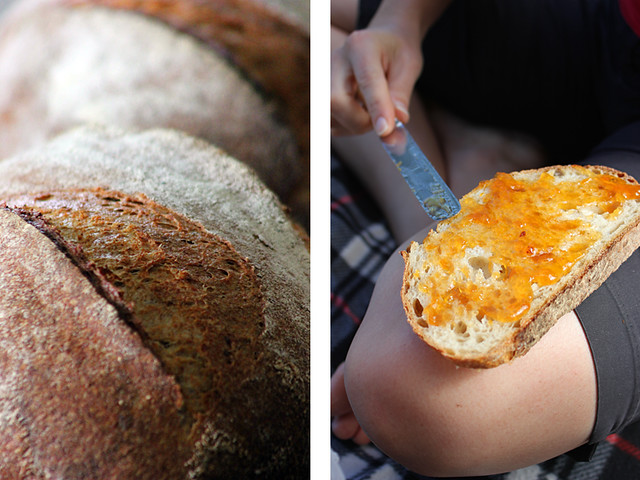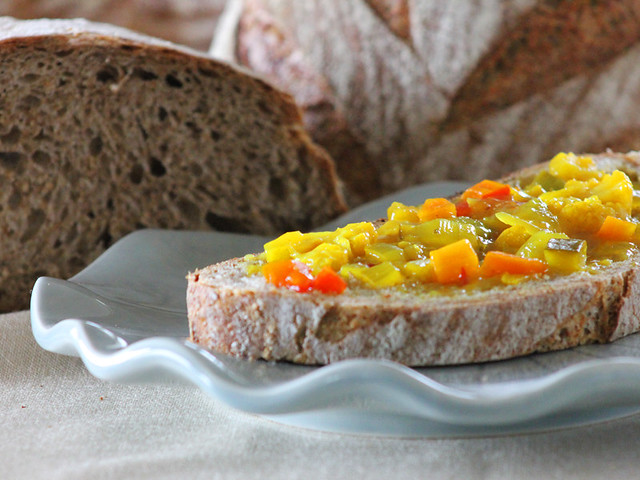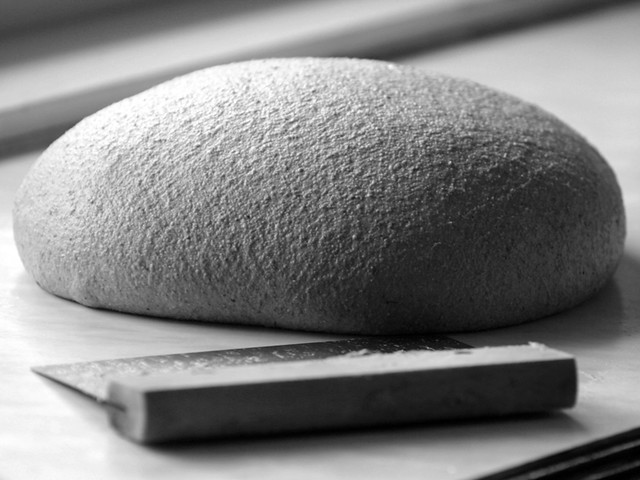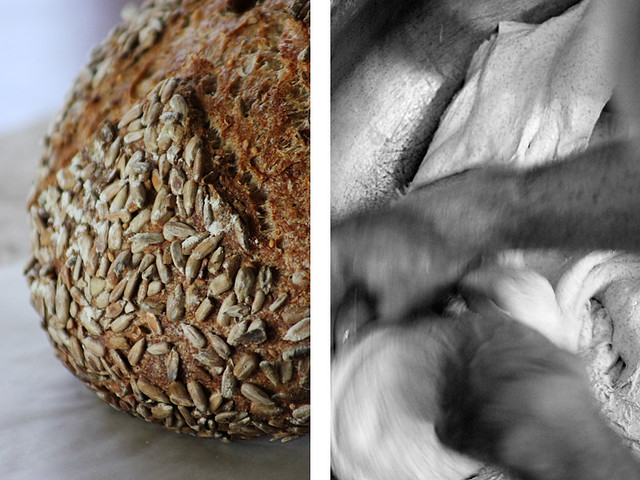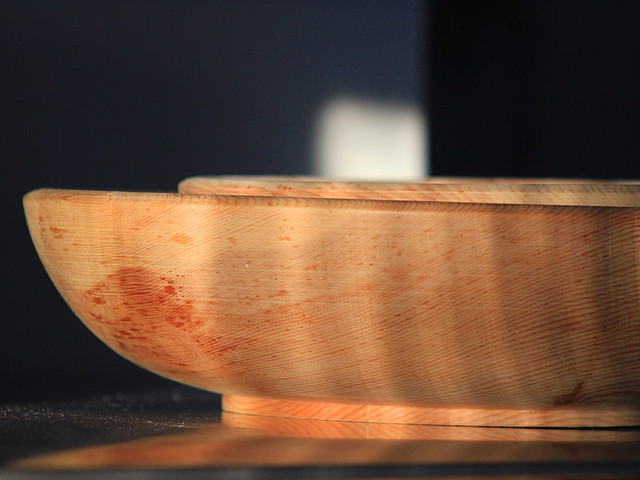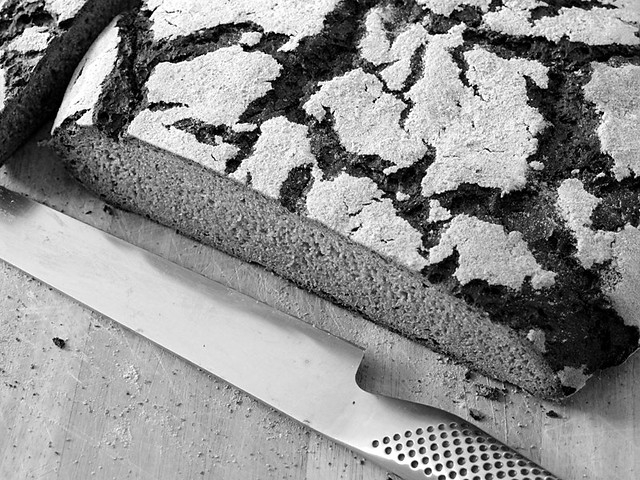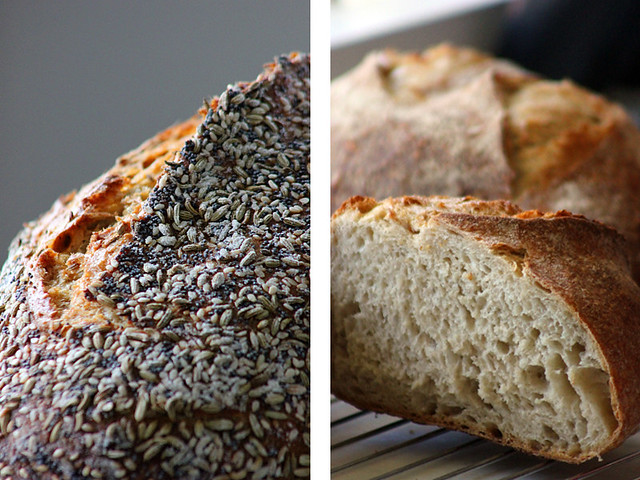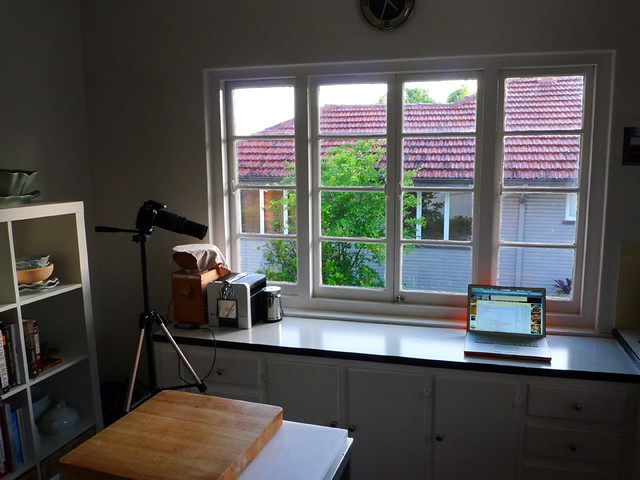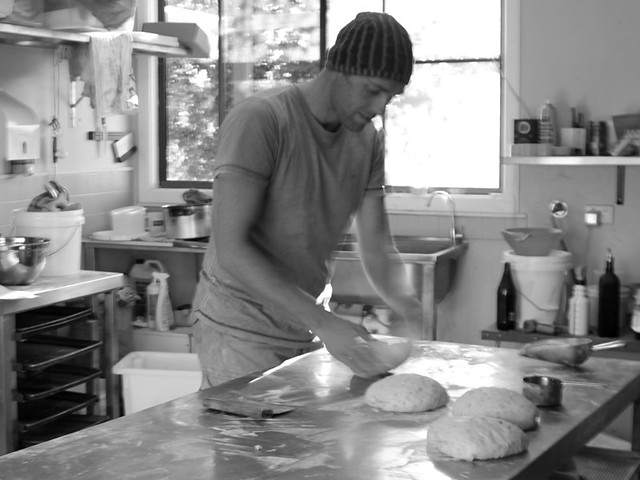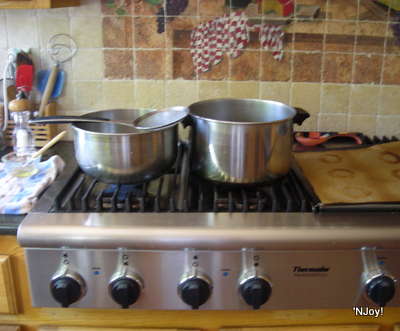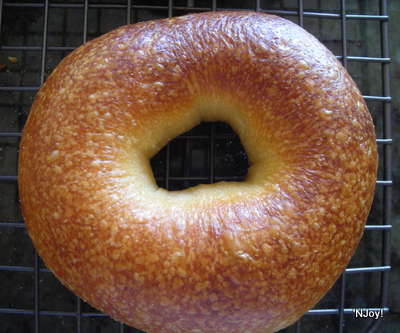
Feeling very frustrated that I haven't been completely satisfied with any loaf I've made within the last few weeks, I decided to make a multigrain sandwich loaf. One that doesn't require a starter. And yes this frustration includes the Portuguese Sweet Bread because, even though it was soft and the crumb was almost perfect and the color was spot on, it wasn't perfect which doesn't sit well with a perfectionist. I also made this bread because I haven't been able to make a sandwich bread that is soft and spongy like so many good sandwich loaves are. Mine turn out dense.
With this loaf I tried a few things that I haven't done in the past with sandwich loaves. The first being I used filtered bottled water. Again, I think this was part of my problem before and I don't think I'll ever go back to using the tap. The second, most important thing I changed was the kneading method. I've been obsessed with trying to pick up any tips and tricks I could find that will improve my loaves and the Stretch and Fold method really caught my attention.
Now let me tell you, I had my doubts. But I tried it and I think I'll be applying it in the kitchen more often.
This particular recipe is from Peter Reinharts The Bread Baker's Apprentice.... Multigrain Extraordinaire. Loved it. I actually can't wait to make it again. The loaf lasted 2 days and that's only because we wanted to save some to make BBQed pork sandwiches from a pork roast I made on Saturday. Here is what I did with a few modifications to the recipe...
Soaker:
3 tbsp Quinoa
3 tbsp course ground Corn meal
2 tbsp Flax meal
1/4 c water
Mix all of this together and let it sit overnight, covered at room temperature
Dough
13.5 oz unbleached bread flour
3 tbsp white sugar
1/4 oz instant yeast (or 1 full packet)
1 1/2 tsp salt
all of the soaker
1 1/2 tbsp honey
1/2 c milk
3/4 c water
Combine all dry ingredients and whisk together. Then add the soaker and remaining wet ingredients. Mix until the dough starts to form a ball and then turn out onto a lightly floured surface and knead for a few minutes until everything is fully incorporated. This dough was wetter and softer than I anticipated so I had to keep my area and hands floured pretty often. Once everything seems uniformly incorporated (about 3 min), place the dough ball into a lightly oiled bowl covered with plastic wrap for 30 min.

Remove the dough from the bowl and do the first stretch and fold. Place the dough back into the bowl to rest for 30 min. My dough tried to blow another bubble!

Repeat the stretch and fold and put the dough back into the bowl for another 30 min rest. (2 total stretch and folds, 1.5 hrs total of resting).
Shape the loaf and place into a lightly oiled loaf pan and proof until the dough has crested the pan. Mine took an hour.




Bake at 350 degrees for 20 minutes, then rotate and bake an additional 15-20 minutes or until the internal temp registers 195 degrees. This makes 1 - 2lb loaf.

I was amazed to see how much the dough rose during the second and third resting periods and how easy it was to handle. I was also amazed at how fast it rose, and how soft and delicately delicious the flavor and crumb turned out.

I've never made a softer sandwich loaf before. I also loved the textures of the grains that I used. All I have to say is...BEST loaf I've ever made. Now I believe that I am capable of truly extraordinary bread.





